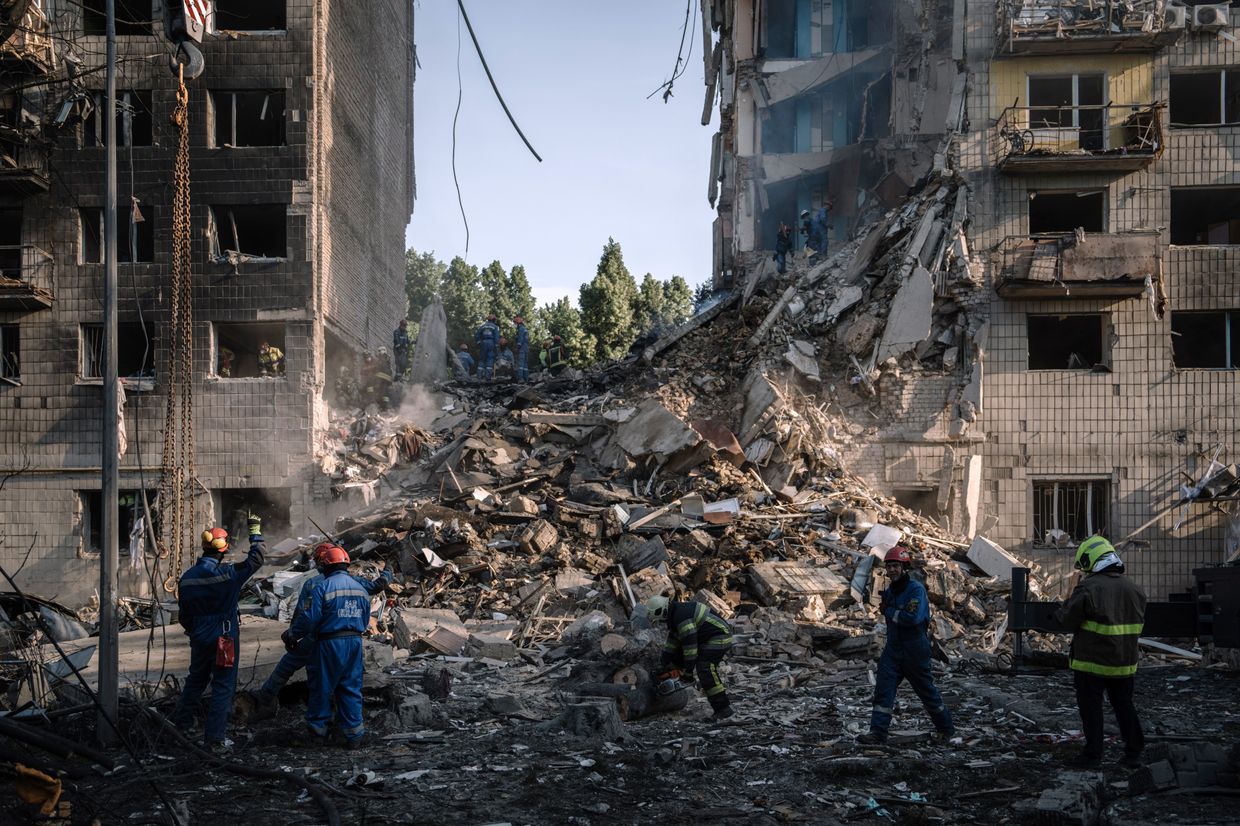Ukraine’s oligarchs, once the nation’s power brokers, have seen their influence wane dramatically over the past decade. Amid the ongoing war and internal reforms, the oligarchs who once shaped Ukraine’s post-Soviet trajectory face a new reality. The structural factors that created these powerful figures have largely dissipated, leaving a political landscape that is markedly different from the one they once dominated.
But what has happened to Ukraine’s oligarchs, and what does this mean for the country’s future?

KI Insights subscribers can attend an online deep-dive briefing on the current state of Ukraine’s oligarchs by registering here.
The rise of Ukraine’s oligarchs
Ukraine’s oligarchs emerged from the chaos of the 1990s, a period marked by the collapse of the Soviet Union and the rapid privatization of state assets. These individuals capitalized on the disorder, acquiring vast industrial assets at bargain prices. This accumulation of wealth was not merely an economic success; it translated into substantial political power.
Unlike Russia, where Russian President Vladimir Putin consolidated control over the oligarchs, Ukraine’s oligarchs operated in a competitive environment, each vying for influence. This competition resulted in a unique form of pluralistic authoritarianism. Oligarchs like Rinat Akhmetov, Viktor Pinchuk, and Ihor Kolomoisky amassed fortunes and used them to exert control over politics, the media, and key industries, centralizing different power sources but providing a checks and balances of sorts over one another.
The oligarchs were kingmakers in Ukrainian politics, and no leader could dominate them entirely – though former Ukrainian President Viktor Yanukovych came closest. While far from democratic, this environment allowed for a form of political diversity and helped protect Ukraine from falling entirely under the sway of foreign powers, particularly Russia.
Despite their self-serving interests, oligarchs played a critical role in defending Ukraine during crises. For instance, Kolomoisky supported battalions like Dnipro-1 when Russia’s war against Ukraine began in 2014, combining his financial, political, media, and military power.

The decline
A major factor in the oligarchs’ decline is the rise of Ukrainian civil society, which targeted the corruption they fueled during the 2014 EuroMaidan Revolution. This eventually led to anti-oligarch laws under President Volodymyr Zelensky in 2021, which created a register of individuals with undue influence on the media, leading many to – at least formally – relinquish control over their media empires.
Ukraine’s economic transformation (and destruction) also played a role. The war has decimated industries that were once oligarchs’ financial backbones. Take metallurgy: According to the National Bank of Ukraine, metal exports plummeted by nearly two-thirds from 2021 to 2022, falling from $15.7 billion to just $5.8 billion. Azovstal, the largest steel producer and owned by Ukraine’s richest man, Rinat Akhmetov, now lies in the ruins of Russian-occupied Mariupol, while the mines of Donbas have flooded due to shelling.
Ukraine's wealthiest individuals have seen their fortunes shrink dramatically. Akhmetov's wealth alone dropped from $7.6 billion in 2021 to just over $4 billion in 2023. Investigations suggest he has even put his private jets up for sale.
Other “oligarchic sectors” have also changed for various reasons. Agriculture, which remains a significant industry in Ukraine, is now mostly concerned with protecting its business interests rather than wielding political power. It is navigating export hurdles, manpower shortages, and the loss of vast swathes of its precious black soil, now mined or occupied. The finance sector, previously a playground for oligarchs, is now split between state control and more classical banking businesses, further diluting oligarchs’ influence over national affairs.
New(ish) players in a new era?
While the old guard of oligarchs is in decline, new sectors have opened opportunities for a different kind of wealth accumulation. Industries like gambling, e-sports, and cryptocurrency have introduced figures such as Maksym Krippa, who made headlines after his associate Tetiiana Snopko acquired media outlets like Glavcom and Delo.ua, while Krippa himself purchased the prestige Parus business center in central Kyiv.
Real estate and construction have also seen new players emerge, including investment bank CEO and former European Business Association President Tomas Fiala, often described as a de facto new oligarch due to his ownership of two major media outlets. However, Fiala typically avoids this label thanks to his Czech citizenship and strong pro-Western stance.
The tech sector has also produced multi-millionaires, such as the founders of Grammarly, but many of these individuals are oriented globally and have little interest in the Ukrainian market. With highly mobile wealth, they can easily relocate to more business-friendly environments like Portugal or Dubai, reducing their interest in shaping Ukrainian politics, whether to seize opportunities and counter threats.
Perhaps more significant than the emergence of new faces – many of whom are deliberately staying out of the spotlight – is the rise of former “second-row” oligarchs. These are figures who previously ranked lower but have since gained prominence, such as People’s Deputy and retail billionaire Oleksandr Hereha.

High stakes ahead
Two additional factors have significantly curtailed oligarchic power: the decline of traditional media and the absence of elections. Television, once the primary medium through which oligarchs exerted their influence, has been largely replaced by social media – a chaotic, decentralized space where control is much harder to maintain. Meanwhile, the postponement of elections due to martial law has deprived oligarchs of their traditional means of exerting political influence through funding political parties and candidates.
The decline of oligarchic power does not necessarily mean the end of corruption in Ukraine, but it does suggest a shift. The upcoming 2025 elections, if they occur, will be a critical test: Will Ukraine turn into a more typical, centralized hybrid regime, will it leapfrog this phase to become a full liberal democracy, or will business interests reassert control? After all, political parties are strapped for cash, and MPs will still need financial support to maintain their offices.
As Ukraine moves forward, the role of oligarchs in its political and economic life will likely continue to evolve. The centralized wartime power structure that has replaced the old oligarchic but pluralistic system presents new challenges and opportunities for Ukraine's state-building process. While the decline of oligarchs marks a significant step in this process, it is by no means the final chapter. The legacy of Ukraine's oligarchs will continue to shape the country's future, even as the forces that once empowered them fade into history.
Editor's Note: The opinions expressed in the op-ed section are those of the authors and do not purport to reflect the views of the Kyiv Independent.















